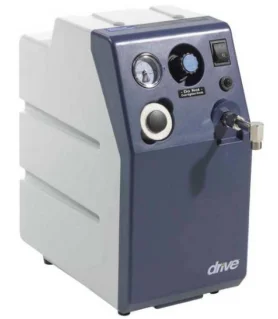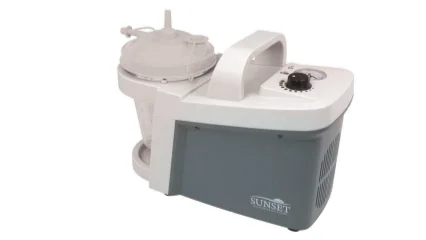Does Medicare Cover Your Manual Wheelchair? A Step-by-Step Guide to Navigating Insurance Coverage
Key Takeaways
- Medicare Part B Covers It: Most manual wheelchairs are classified as “Durable Medical Equipment” (DME) and are covered by Medicare Part B.
- Medical Necessity is Key: Coverage is contingent on a doctor’s determination that the wheelchair is medically necessary for use within your home.
- You’ll Still Pay a Portion: After meeting your Part B deductible, Medicare typically covers 80% of the Medicare-approved amount, leaving you responsible for the remaining 20% coinsurance.
- Doctor’s Order and Approved Supplier are Required: You must have a face-to-face examination and a written prescription from a Medicare-enrolled doctor. You also must obtain the wheelchair from a Medicare-enrolled supplier. UniversalMed Supply is a Medicare-enrolled supplies, we’d be happy to see if we can help you get a manual wheelchair!
- Different Wheelchair Types Have Different Criteria: While a standard manual wheelchair has clear criteria, more advanced manual wheelchairs (like lightweight or heavy-duty models) have additional requirements to qualify for coverage.

For many individuals with mobility limitations, a manual wheelchair can be a crucial tool for maintaining independence and performing daily activities. If you are a Medicare beneficiary, a common and important question is whether this essential equipment will be covered. The good news is that Medicare does provide coverage for manual wheelchairs, but there are specific rules and steps you need to follow to ensure your claim is approved.
This guide will walk you through the process, from understanding the criteria to working with your doctor and supplier.
Understanding Medicare's Coverage Criteria
Medicare Part B (Medical Insurance) is the part of Original Medicare that covers Durable Medical Equipment (DME), including manual wheelchairs. For an item to be covered, it must be considered “medically necessary.”
To qualify for a manual wheelchair under Medicare, you must meet the following criteria:
- You Have a Mobility Limitation: Your health condition must significantly impair your ability to move around in your home. This limitation must make it difficult to perform daily activities, such as bathing, dressing, using the restroom, or moving from a bed to a chair, even with the use of a cane or walker.
- The Wheelchair is for At-Home Use: Medicare’s coverage is specifically for equipment used within your home. While you can use the wheelchair outside, the medical necessity must be justified by your needs inside the house.
- You Can Safely Use It: You must have enough upper body strength and other physical and mental capabilities to safely propel the wheelchair yourself, or you must have a caregiver who is always available to assist you.
- Your Doctor Prescribes It: You must have a face-to-face examination with your treating physician, who must then provide a written order stating that the wheelchair is medically necessary for your condition.
Manual Wheelchair Maintenance: A Quick Checklist For Longevity and Safety
The Step-by-Step Process to Get Your Wheelchair

Navigating the process can be straightforward if you follow these key steps:
Step 1: Talk to Your Doctor
Your first and most important step is to schedule a face-to-face appointment with your doctor. They will evaluate your mobility, assess your health condition, and determine if a manual wheelchair is the most appropriate and medically necessary solution.
Your doctor’s medical records are crucial. They must document:
- Your specific health condition and mobility limitations.
- How these limitations make it difficult for you to perform daily activities within your home.
- Why a cane, walker, or other mobility aids are not sufficient.
- That you can safely operate the wheelchair or have a caregiver to assist you.
Your doctor will then provide a written prescription for the wheelchair.
Step 2: Choose a Medicare-Enrolled Supplier
It is critical that you obtain your wheelchair from a supplier that is enrolled in Medicare. If you use a supplier who is not, Medicare will not cover the cost, and you will be responsible for the full amount.
Our organization,UniversalMed Supply, is a Medicare enrolled supplier and would be happy to see if we can be of service as you try to obtain a manual wheelchair through your insurance coverage.
Step 3: Understand Your Costs
Medicare Part B covers a manual wheelchair as a piece of DME. This means:
- Part B Deductible: You must first pay your annual Part B deductible (in 2025, this is $257).
- Coinsurance: After your deductible is met, Medicare will pay 80% of the Medicare-approved amount for the wheelchair. You will be responsible for the remaining 20% coinsurance.
- Secondary Insurance: In most cases, if you have secondary insurance such as a Medicaid plan you may end up paying nothing out of pocket for your equipment.
Depending on the cost of the wheelchair, Medicare may require that you rent it rather than purchase it. If you rent, Medicare will cover 80% of the monthly rental fee. In some cases, after a certain number of rental payments (often 13 months), the supplier will transfer ownership of the wheelchair to you.
Step 4: Special Considerations for Advanced Wheelchairs
If you require a more advanced type of manual wheelchair, such as a high-strength lightweight wheelchair or a heavy-duty wheelchair, you will need to meet additional criteria. Your doctor’s documentation and the supplier’s evaluation must justify why a standard manual wheelchair is not sufficient for your needs.
For example, to qualify for a heavy-duty wheelchair, you must typically weigh more than 250 pounds or have severe spasticity. For a high-strength lightweight wheelchair, your medical records must show that you cannot self-propel a standard wheelchair but can and do use a lightweight one for your daily activities.
Finding the Right Fit and Appeals
Once you have your doctor’s order and are working with a Medicare-enrolled supplier, they will help you select a wheelchair that is appropriate for your needs. Many suppliers offer home assessments to ensure the wheelchair will fit through your doorways and can be used safely in your living space.
If your request for coverage is denied, you have the right to appeal the decision. You or your supplier can submit additional information to Medicare to provide a more detailed explanation of why the equipment is medically necessary for you.
Navigating Medicare can be complex, but by following these steps and working closely with your doctor and an approved supplier, you can successfully obtain the manual wheelchair you need to improve your mobility and quality of life.
Ready to find the right manual wheelchair for your needs? See our complete range of manual wheelchairs and learn more about working with a Medicare-enrolled supplier
FAQs Medicare & Manual Wheelchair Coverage
Q: Does Medicare cover manual wheelchairs?
A: Yes, Medicare Part B (Medical Insurance) covers manual wheelchairs as Durable Medical Equipment (DME) as long as they are considered medically necessary by your doctor.
Q: What are the key requirements to get a manual wheelchair covered by Medicare?
A: To be eligible, you must:
- Have a health condition that significantly impairs your ability to move around inside your home.
- Require the wheelchair for use within your home.
- Be able to safely use the wheelchair yourself or have a caregiver to assist you.
- Have a written prescription from a doctor after a face-to-face examination.
Q: What is considered "medically necessary" for a manual wheelchair?
A: Medicare defines “medically necessary” as an item required to diagnose or treat a health condition. For a manual wheelchair, this means your doctor’s records must show how your mobility limitations make it difficult to perform daily activities at home and that a cane or walker is not sufficient.
Q: Will Medicare pay for a manual wheelchair for outdoor use?
A: Medicare’s coverage is based on the medical need for the wheelchair inside your home. While you can use the wheelchair outside, the primary justification for coverage must be for at-home use.
Q: How much will I have to pay for a manual wheelchair with Medicare?
A: After you meet your annual Medicare Part B deductible, you are responsible for paying 20% of the Medicare-approved amount for the wheelchair. Medicare covers the remaining 80%.
Q: Do I need to buy my wheelchair, or can I rent it?
A: Depending on the cost of the wheelchair, Medicare may require you to rent it. If you rent, Medicare will cover 80% of the monthly rental fee. In some cases, after a certain number of rental payments (e.g., 13 months), the wheelchair ownership is transferred to you.
Q: Can I get a high-strength lightweight or heavy-duty wheelchair with Medicare?
A: Yes, but your doctor’s documentation must provide additional justification for why a standard manual wheelchair is not sufficient for your needs. For example, a heavy-duty wheelchair may be covered if you weigh over 250 pounds or have severe spasticity.
Q: Is it important to choose a Medicare-enrolled supplier?
A: Yes, this is a critical step. If you get your wheelchair from a supplier who is not enrolled in Medicare, your claim will be denied, and you will be responsible for the full cost.
Q: What should my doctor's prescription and medical records include?
A: Your doctor’s records must clearly document your specific health condition, how it limits your mobility at home, why other mobility aids are not sufficient, and that you are able to safely use the wheelchair.
Q: What if my request for a wheelchair is denied?
A: You have the right to appeal Medicare’s decision. You or your supplier can submit additional information to Medicare to further explain the medical necessity of the equipment.



